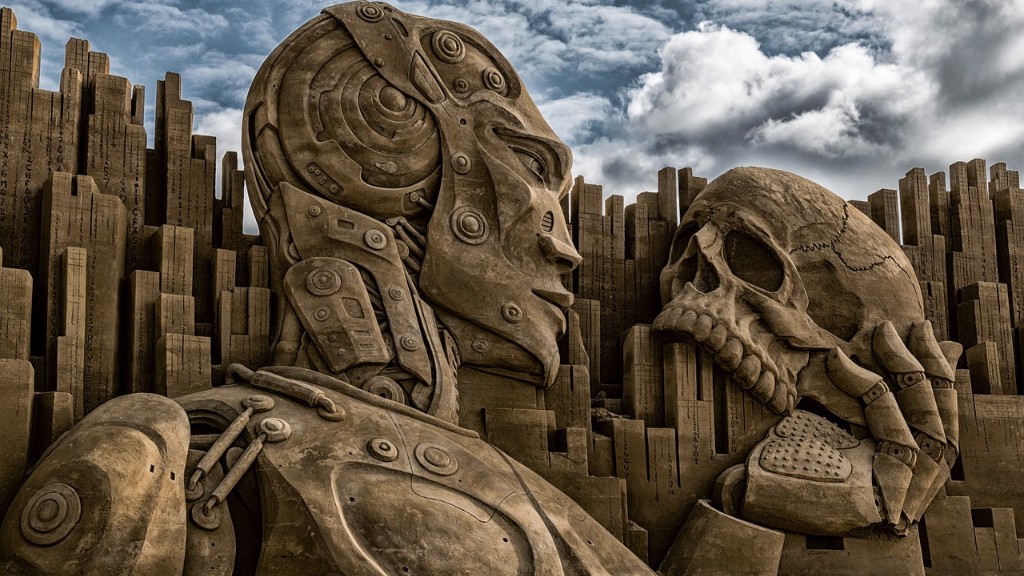The Little Mermaid: A Tale of Danish History and Culture
Located on the Langelinie promenade in Copenhagen, the iconic statue of The Little Mermaid has become an enduring symbol of Denmark. This bronze sculpture, inspired by the fairy tale written by Danish author Hans Christian Andersen, attracts millions of visitors each year. Its enchanting beauty and historical significance make it a must-see for tourists from around the world. In this article, we delve into the background of The Little Mermaid, exploring its origins, cultural impact, and the controversy surrounding it.
Origins of The Little Mermaid
Hans Christian Andersen published The Little Mermaid in 1837 as part of a collection of fairy tales. The story follows the journey of a young mermaid who sacrifices her voice and tail to become human and seek the love of a prince. Andersen’s tale captivated readers with its themes of longing, sacrifice, and the desire for acceptance. It quickly gained popularity and has since been translated into countless languages.
Given the success of the story, it was only a matter of time before someone immortalized the little mermaid in the form of a statue. In 1909, the Danish brewer Carl Jacobsen commissioned the sculptor Edvard Eriksen to create a monument in honor of The Little Mermaid. The statue was unveiled in 1913 and has been an integral part of Danish culture ever since.
Cultural Significance
For Danes, The Little Mermaid represents national pride and cultural heritage. The statue has become a quintessential symbol of Copenhagen, standing as a testament to the rich literary history of Denmark. Its enduring popularity is a testament to the universal appeal of Andersen’s fairy tales, which continue to captivate readers of all ages.
Beyond Denmark, The Little Mermaid has permeated popular culture. Countless adaptations, including films, ballets, and stage productions, have been inspired by Andersen’s tale. The Disney animated film released in 1989 brought the story to a global audience, further cementing the mermaid’s place in popular culture.
The Controversy
Despite its significance, The Little Mermaid has not been immune to controversy. Over the years, the statue has been subjected to vandalism, political protests, and even decapitation. The motivations behind these acts vary, with some viewing the statue as a symbol of Danish colonialism, while others simply seek to make a statement or gain attention.
One perspective comes from Dr. Karen Smith, a Danish culture expert, who suggests that the controversy surrounding The Little Mermaid is a result of the statue’s cultural prominence. In an interview, Dr. Smith explains, “The Little Mermaid has become a canvas for people to express their own ideas and frustrations. It has transcended its original context and become a space for discourse.”
The Little Mermaid Today
More than a century after its creation, The Little Mermaid continues to draw visitors from all corners of the globe. Tourists flock to the Langelinie promenade to catch a glimpse of the statue, often immortalizing the moment with photographs. The little mermaid’s stoic expression and graceful pose serve as a reminder of the enduring power of fairy tales and the impact they have on our collective imagination.
In recent years, initiatives have been taken to protect the statue from further vandalism and damage. Heightened security measures and regular maintenance help ensure the longevity of this beloved symbol. While controversy may continue to swirl around it, The Little Mermaid remains an important part of Danish history and culture. It serves as a bridge between the past and the present, connecting generations through shared stories and the magic of Andersen’s timeless tale.
The Little Mermaid: A Global Legacy
The global impact of The Little Mermaid extends far beyond the shores of Denmark. Here are some examples of its influence around the world:
Landmarks Inspired by the Statue
The success of the statue in Denmark has led to the creation of similar sculptures in other countries. For instance:
- Belgium: In Brussels, a statue known as “Het Zinneke” was inspired by The Little Mermaid and serves as a symbol of the city’s diverse cultural heritage.
- Canada: Toronto is home to a bronze statue of a mermaid, situated in the Toronto Music Garden and inspired by Andersen’s tale.
- United States: In Solvang, California, a replica of the Copenhagen statue greets visitors, paying homage to Denmark’s cultural influence.
The Mermaid Trail in Denmark
As a tribute to Hans Christian Andersen, the Danish government established the Mermaid Trail. This trail spans across different cities in Denmark, featuring various mermaid statues designed by local artists. Each statue draws inspiration from The Little Mermaid, offering a unique perspective on the beloved character and expanding the legend’s reach.
Inspiration in Literature and Art
A myriad of authors and artists have drawn inspiration from The Little Mermaid over the years. From reimagined fairy tales to modern novels and paintings, the character has found new life in various creative forms. This ongoing artistic dialogue pays homage to Andersen’s original creation while adding layers of complexity and interpretation.
The Environmental Message
In recent years, the story of The Little Mermaid has taken on new relevance in the context of environmentalism. As ocean pollution and climate change threaten marine life, the mermaid’s tale serves as a reminder of the fragile beauty of our oceans. Many environmental organizations have adopted the mermaid as a symbol, using her image to raise awareness and advocate for ocean conservation.
With its lasting cultural impact and timeless appeal, The Little Mermaid continues to enchant generations, keeping the magic of fairy tales alive. Whether standing by the Copenhagen harbor or inspiring new artistic endeavors, this iconic statue serves as a testament to the enduring power of imagination and storytelling.



